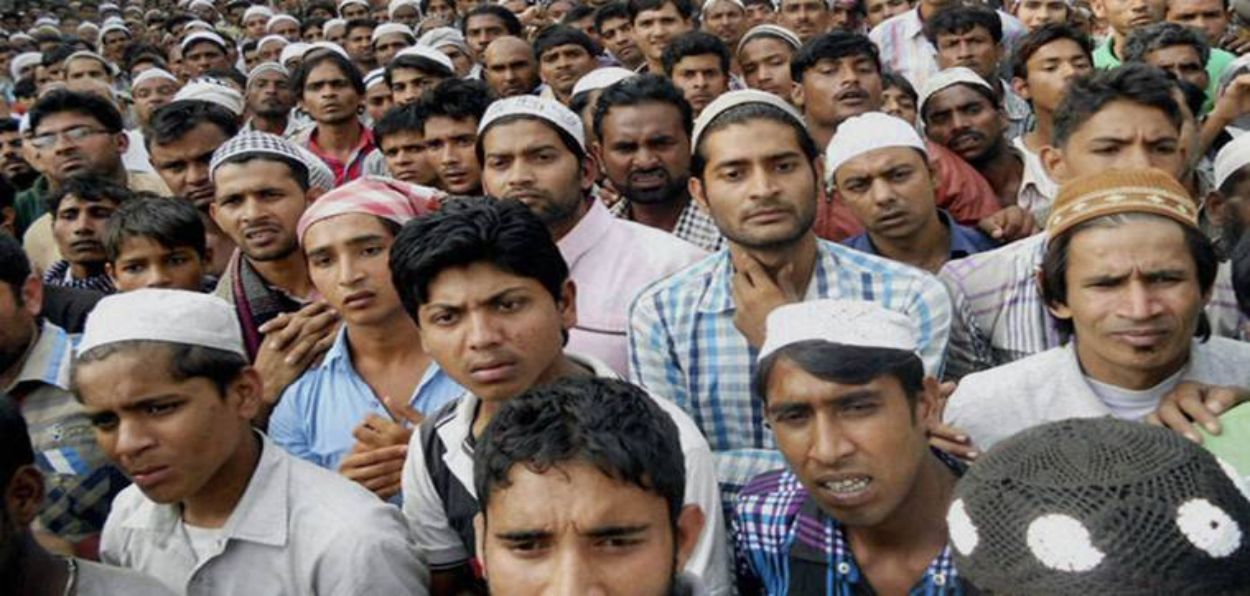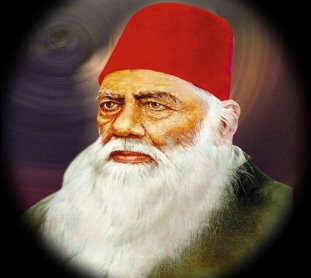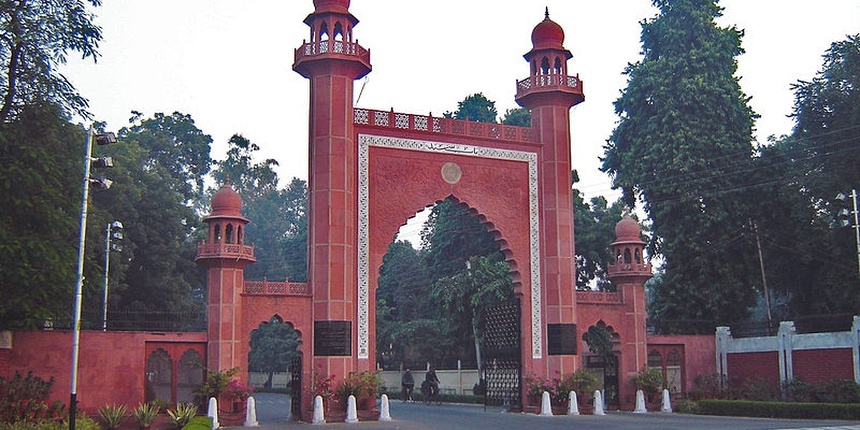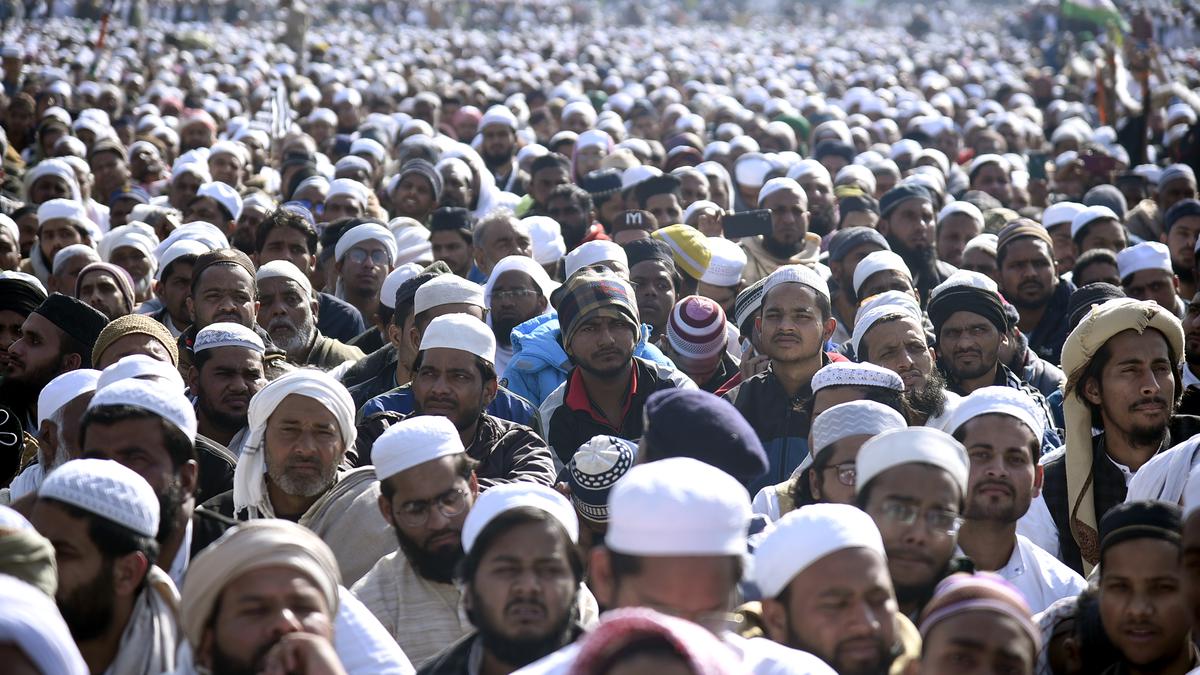
Abdullah Mansoor
I have faced stronger opposition for writing against the caste-based thinking of Sir Syed, founder of the first major Muslim Institution in India that is today known by the name of Aligarh Muslim University than my writings against the similar thinking of the Deobandi, Barelvi, Ahle-Hadith Ulemas.
Forget about the Ashraf alumni of the AMU, even the Pasmanda who pass out from there fiercely oppose me with the logic and facts coined by Ashraf intellectuals and being given out for decades. These arguments are mostly out of context and misleading.
To Pasmanda, I would quote Steve Biko: "The most effective weapon in the hands of the oppressor is the mind of the oppressed." In this case, it is not an overnight development but executed in a well-planned manner. The Ashrad alumni use the 'Aligarh Old Boys Association' and 'Sir Syed Day' as tools to establish the cult of Sir Syed.
It is a fact that the first educated generation of Muslims in India was of Ashraf men. So, wherever they went, they created the image of Sir Syed as a Mahatma.
This club of educated Ashraf ended up creating an aura around Sir Syed; weaving myths and writing books on his greatness. Songs-poems-ghazals were written in his praise, and in today’s social media-driven world, his image is flaunted as the DP (Displayed profile picture) by many of his admirers. A culture of devotion was developed so that every dissenting voice was silenced to the level that any opposition to Sir Syed is treated as blasphemy.

Sir Syed Ahmed Khan
This is the way to make any person a Mahatma. Every religion, sect, and ideology creates its own Mahatmas so that they can give a tangible form to their ideology. Jesus, Muhammad, Marx, Lenin, Mao, and Sir Syed are the embodiment of ideologies. Also, for his followers, it’s important to point out the shortcomings of the Mahatmas of the rival and opposing ideologies. M K Gandhi became a Mahatma because Congress was in power.
Gandhi and Nehru are not the same Mahatmas today as they were during the time of Congress, because those who follow their ideology do not yet have the system to make them Mahatmas. This is the reason why it is equally difficult to criticize the greatness of the class which is in the center of power (political, socio-cultural, or economic power) because the false arguments-facts and stories fabricated for its greatness are contrary to the beliefs of the people. This belief system itself makes them blind devotees.
Many lies have been fabricated about Sir Syed. One of them, for example, is that it is because of Sir Syed that modern education was adopted by Muslims and that he favoured teaching the English language. The reason for teaching English was a fatwa of blasphemy on him. So far we have been told that Sir Syed spread modern education among Muslims otherwise Muslims could get government jobs. This is not the full truth. In Sir Syed's view, the concept of 'Qaum' did not include Pasmanda (backward) Muslims, nor did he want to give the benefit of modern education to the majority of Muslims. Also, it’s not a fact that Sir Syed is the first person who encouraged (the elite) Muslims to study the English language.
Pakistani historian Mubarak Ali writes in his book Almiya-e-Tarikh that, "Sir Syed wanted to benefit a certain section of the Muslims through the teachings of compromise, taawun, and loyalty, and this section was the umrah and feudal lords." When he used the word 'Muslim' he meant this particular class of Muslims and not all Muslims because the stability of the British rule and the incident of 1857 badly affected the Muslim landlord and landlord class. Sir Syed represented this elite class and under his leadership, this class kept joining in. As far as the Indian people of the country (here it means the native Muslims of India i.e. Pasmanda) were concerned, they were the exploited class. He was always a victim of this. Therefore, the change of the country's regime was not a very important thing for him. Sir Syed was related to the family of Mughal Umra and the family and environment in which he received his education (Ashraf) It was confined to the elite class. That is why their thinking, their outlook, and their mentality reflect the mentality of this (Ashraf) elite class. Sir Syed had a particular (Ashraf) feudal mindset and could neither think nor see beyond it. (Almiya-i-Tarikh, page no. 151)"
Sir Syed hoped that through English education, he could create a race that would become better citizens under British rule. Sir Auckland praised Sir Syed's efforts and said the students of Aligarh (AMU) are an example of that class of India, which tries to appreciate the wishes of the British (Hayat-e-Javed, page number 456). The fact is that Sir Syed himself was not in favour of the study of science.
Mubarak Ali further writes in Almiya-e-Tarikh, "About education, Sir Syed was a supporter of only that education which (Ashraf ) students can get high government posts. In his eyes, there was no more purpose of education than this, so he opposed the study of science because it would create high (feudal) behaviour and elegance.”
Sir Syed openly expresses his feudal thinking. On September 28, 1887, in the second meeting of the 'Mohammedan Educational Conference' in Lucknow, he said, "Those who belong to the lower castes are not beneficial to the country or the government. While people from higher families respect the nobles, along. At the same time, the respect of English society and the impression of justice of the British government are imprinted on the hearts of the people, therefore they are beneficial for the country and the government. Have you not seen what the conditions were like in the Ghadar (revolt)? It was a very difficult time. The army had deteriorated. Some scoundrels had joined hands and the British were in confusion. They had understood that the people were rebellious… O brothers! Pieces of my liver! This is the condition of the government and yours, you should live straight. Not with this type of noise as if crows have gathered! Hey brothers! I have accused the government in such strong words but sometime the time will come that our brothers Pathan, Saadat, Hashmi and Qureshi who have Ibrahim A. (Abraham in their blood )will be in the army wearing bright uniforms, with ranks as colonel and major, but that time must wait. The government will definitely take cognizance, the condition is that you do not let him doubt… Do justice… How many days have passed since the British ruled? How many days have passed since Ghadar? And the sorrow that reached the British, though it was from the illiterate, was not from the rich. Tell him how many days have passed. I tell the truth that the work which is going to take you to a higher level is higher education. Until such people are born in our society, we will continue to be disrespected. We will lag behind others and will not reach the respect our heart longs to reach. These are some bitter pieces of advice that I have given to you. I don't care if anyone calls me crazy or anything!" Thus we see that Sir Syed was working for his caste class interests.”

Aligarh Muslim University, Aligarh
Answering this question, historian Mubarak Ali writes in his book, "Long before Sir Syed, the English-educated class had emerged in the Muslim (Ashraf) class and the Muslim student government was receiving English education in the schools set up by the (British). Hence the Mohammedan Anglo-Oriental College established by Sir Syed could not make much of an impact on the education of the Muslims (Ashrafs) in its early days. For example from 1882 MAO College produced 220 Muslim graduates by 1902, while Allahabad University produced 420 Muslim graduates during the same period. Therefore, to say that Sir Syed was opposed because of his teaching in English is a lie, rather the opposition was against him. It was because of the religious outlook of the Muslim nobles and the elite class was getting English education and from the early days of the Company, even the Muslim Ulema had come to English jobs."
Mubarak Ali further writes that the view of the educational backwardness of Muslims at that time was given by William W. Hunter's book The Indian Muslims. In this book, only the backwardness and illiteracy of the Muslims of Bengal are mentioned, but later it was applied to the Muslims of Uttar Pradesh as well. The Muslims of Uttar Pradesh were the most educated and socially the happiest ones in India. In the field of education, they were even ahead of Hindus and the same situation was in government jobs. In that also the number of Muslims was more than that of Hindus.
The records of that era have proved that from 1871 to 1884, Muslims availed more education than Hindus and their number was also more in private secondary schools.
Mubarak Ali further writes in 'Almiya-i-Tarikh' that Sir Syed's purpose in imparting the English language and Western education was that the feudal (ashraf) class could achieve government high positions through this and increase their status and power. The structure of education created by Sir Syed and his son Syed Mahmud can be divided into four parts: -
1- (Ashraf) A college should be made on the lines of Oxford and Cambridge for the boys of Umra and Samantas, where they can get Western education.

The common Muslims
2- Madrasa should be opened in every city and town where students can be prepared for college. [It may be noted here that in 1894, Sir Syed and Mohsin-ul-Mulk passed a resolution in the 'Muslis Educational Conference' that small schools should not be opened because if small schools were opened here and there, the donations to Aligarh (Madrasatul Uloom) Will not be able to get it because people will give money only to the schools of their area. According to Maulvi Tufail Ahmed Mangalore, the spirit that had arisen among the Muslims to open schools in different places ended.
3- Maktabs should be opened in every village and religious education should be given there. Along with this, a little bit of Farsi and English should also be studied.
4 - Maktabs should be opened to preserve the Qur'an.
Mubarak Ali writes that this whole scheme of Sir Syed's education was based on classes. Sir Syed considered higher Western education necessary only for Ashraf boys and wanted to keep Pasmanda busy with religious education. He openly displays his thinking again and again. One such occasion came when Sir Syed Sahib was called to lay the foundation stone of the building of 'Madrassa Anjuman-e-Islamia' in Bareilly where the children of the 'low' caste Muslims used to study. Responding to the keynote address by a person from madrasa management Sir Syed said: “You have said in your address that we have no hesitation in teaching the knowledge and education of other communities, probably this is a sign towards reading English in a madrassa like yours; It’s a big mistake. There is no doubt that there is an urgent need for English language and English education in our community. It is the duty of Sardars and 'Sharifs' of our community to provide higher education in English knowledge to their children. There will be no person who is more willing and supportive of promoting English education and knowledge among Muslims than me, but it is also necessary to look at the time and circumstances for each task. At that time, I saw that 75 children were studying in the courtyard of your mosque, near which you want to build a madrassa. Teaching English to the class and level to which these children belong will not be of any benefit. Keeping them engaged in the same ancient system of education is more beneficial in their interest and in the interest of the country.”
Professor Maulana Masood Alam Falahi writes in his book 'Hindustan Mein Jaat-Pat Aur Musalman' that Pasmanda Muslims are not visible in the leadership of the Congress at any level. Every place is dominated by upper-caste Muslims. Famous intellectual, politician, former MP, and former Professor Aligarh Muslim University Mr. Dr. Syed Mohammad Hashim Kidwai wrote a critical letter on this article of his in the December 30, 2001 issue. In this, he called the concept of high and low found among Muslims inappropriate from the Islamic point of view and insisted on ending it. He wrote that there is an urgent need for unity among Muslims, but 'unfortunately, this article did not remove the differences among Muslims.'
He concludes his letter by writing: "Unfortunately, the Savarna versus Avarna feud began in the last century and it is a pity that even Sir Syed Ahmed Khan Sahab did nothing to stop it, rather he took up arms against it in his field." He called for restricting English and Western education to upper-caste Muslims only. It is elsewhere that he is now lavishing praise on letters and articles based on caste."
It must have been clear by now that Sir Syed's contribution to education was limited to the Ashraf class only. But as soon as you prove this point, you are immediately told that today there are thousands of Pasmanda studying in his institution. Why are you protesting today? When Ashraf is saying that today the Pasmanda Muslims are benefiting from AMU, at the same time he is hiding the fact that before independence, the Pasmanda Muslims were discriminated against by the same institution. At that time the educational condition of Pasmanda Muslims was pathetic. When English was required for a government job, Sir Syed did not allow Pasmanda to enter his university.
Today, if Pasmanda Muslims are studying in AMU, it is the gift of the Indian Constitution, not of Sir Syed. [Data obtained by RTI shows that even today the number of SC/ST/OBC in Aligarh is very less] As long as this university is known as an institution of Muslims, Pasmanda Muslims will not benefit from this university. Even today OBC reservation is not given in this university whereas 85% of the population is of Pasmanda Muslims.
Let's accept his argument that today Pasmanda is studying in AMU built by Sir Syed, so if Sir Syed is praised, can we use the same yardstick for the British? For example, the railway was built by the British so that they could take the raw material of their country, but today crores of Indians are using the network. Macaulay brought English into the Indian education system so that he could produce good clerks who may be Indian by skin but English by thought. Today, because of this English, millions of people have got jobs, so do we celebrate Macaulay Day on this basis?
Most of the systems and institutions in India were created by the British. Do we praise the British rule? Prophet Muhammad says that practice is rooted in the intention behind it. This is where Pasmanda and Bahujan students are asking as to what was Sir Syed's intention behind the AMU. Was it to educate Pasmanda Muslims and women in AMU? The answer is 'no'!
ALSO READ: Why Muslim Dalits enjoyed reservations for only 6 months in Independent India
Today the Pasmanda movement's opposition to Sir Syed is not against a person. Sir Syed is the epitome of the Ashraf ideology that is responsible for the backwardness of the Pasmanda society and giving the two-nation theory.
(Abdullah Mansoor is an educationist, author, Pasmanda activist and the owner of YouTube channel Pasmanda Democracy)
